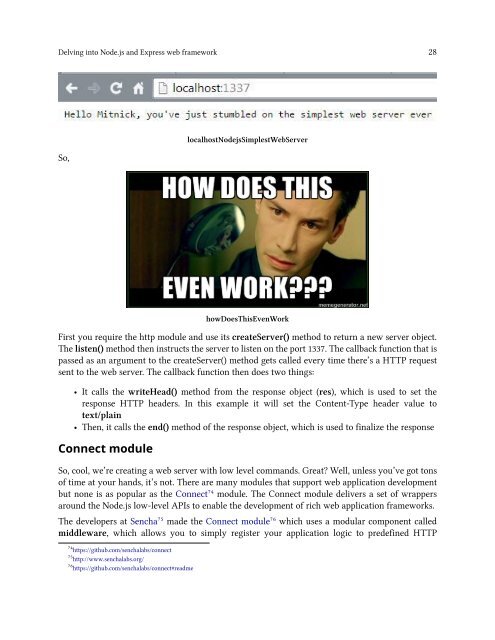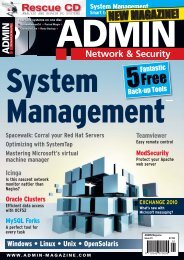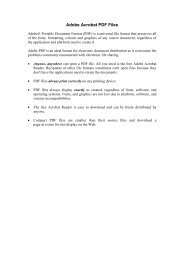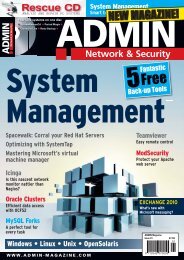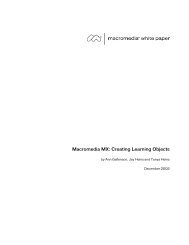Mittwoch, 18. Mai, 2016
Create successful ePaper yourself
Turn your PDF publications into a flip-book with our unique Google optimized e-Paper software.
Delving into Node.js and Express web framework 28<br />
So,<br />
localhostNodejsSimplestWebServer<br />
howDoesThisEvenWork<br />
First you require the http module and use its createServer() method to return a new server object.<br />
The listen() method then instructs the server to listen on the port 1337. The callback function that is<br />
passed as an argument to the createServer() method gets called every time there’s a HTTP request<br />
sent to the web server. The callback function then does two things:<br />
• It calls the writeHead() method from the response object (res), which is used to set the<br />
response HTTP headers. In this example it will set the Content-Type header value to<br />
text/plain<br />
• Then, it calls the end() method of the response object, which is used to finalize the response<br />
Connect module<br />
So, cool, we’re creating a web server with low level commands. Great? Well, unless you’ve got tons<br />
of time at your hands, it’s not. There are many modules that support web application development<br />
but none is as popular as the Connect⁷⁴ module. The Connect module delivers a set of wrappers<br />
around the Node.js low-level APIs to enable the development of rich web application frameworks.<br />
The developers at Sencha⁷⁵ made the Connect module⁷⁶ which uses a modular component called<br />
middleware, which allows you to simply register your application logic to predefined HTTP<br />
⁷⁴https://github.com/senchalabs/connect<br />
⁷⁵http://www.senchalabs.org/<br />
⁷⁶https://github.com/senchalabs/connect#readme


